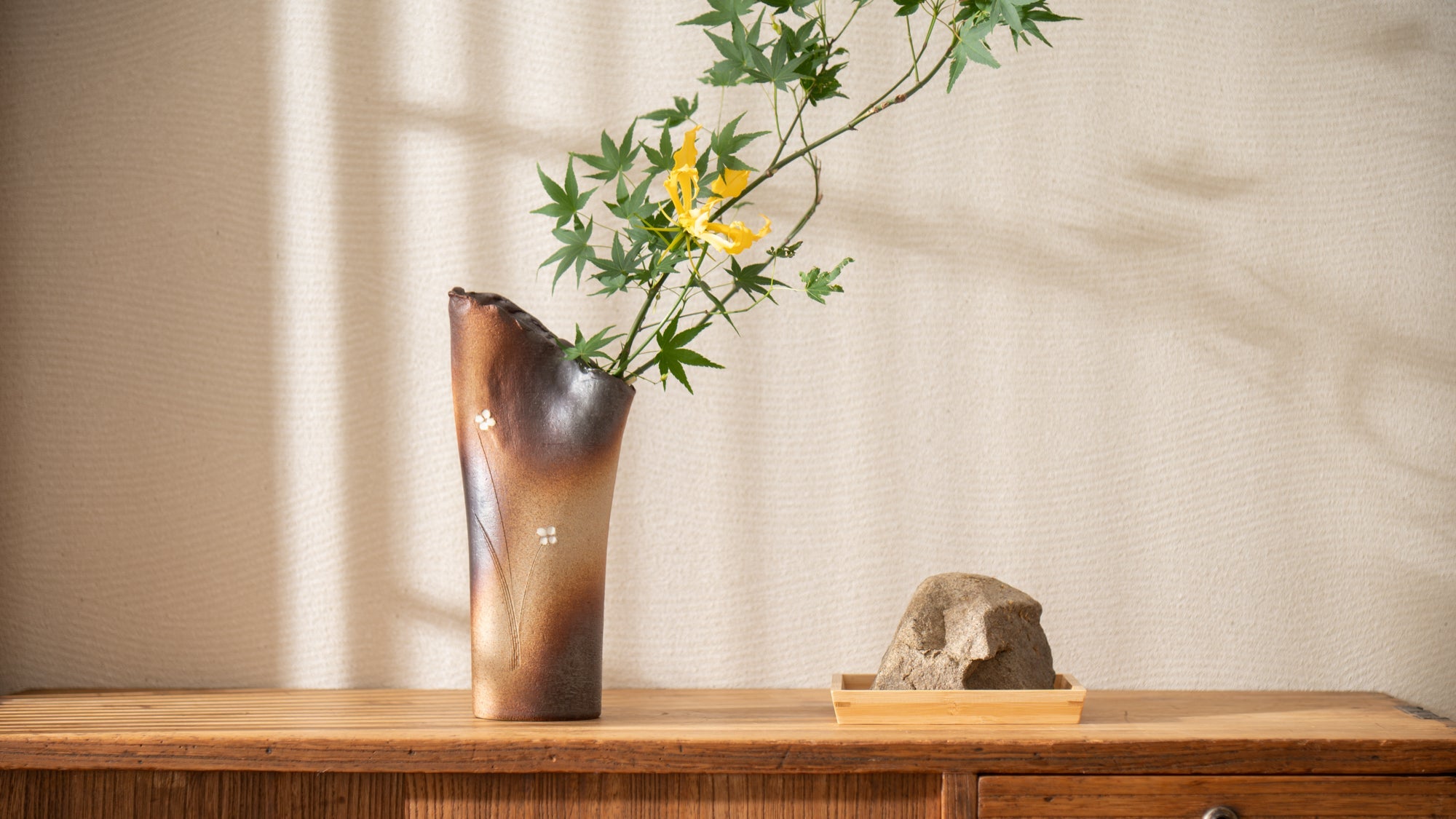
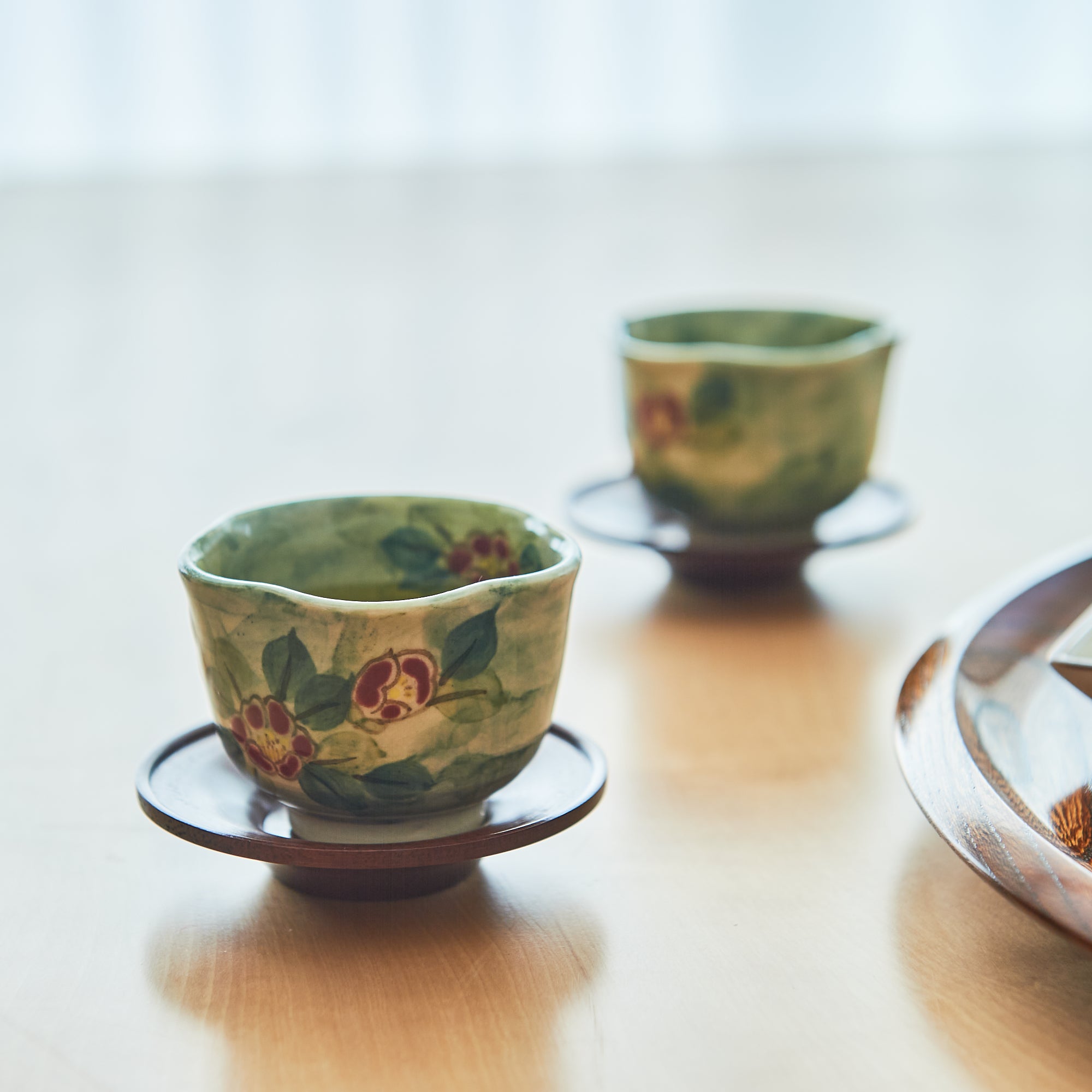
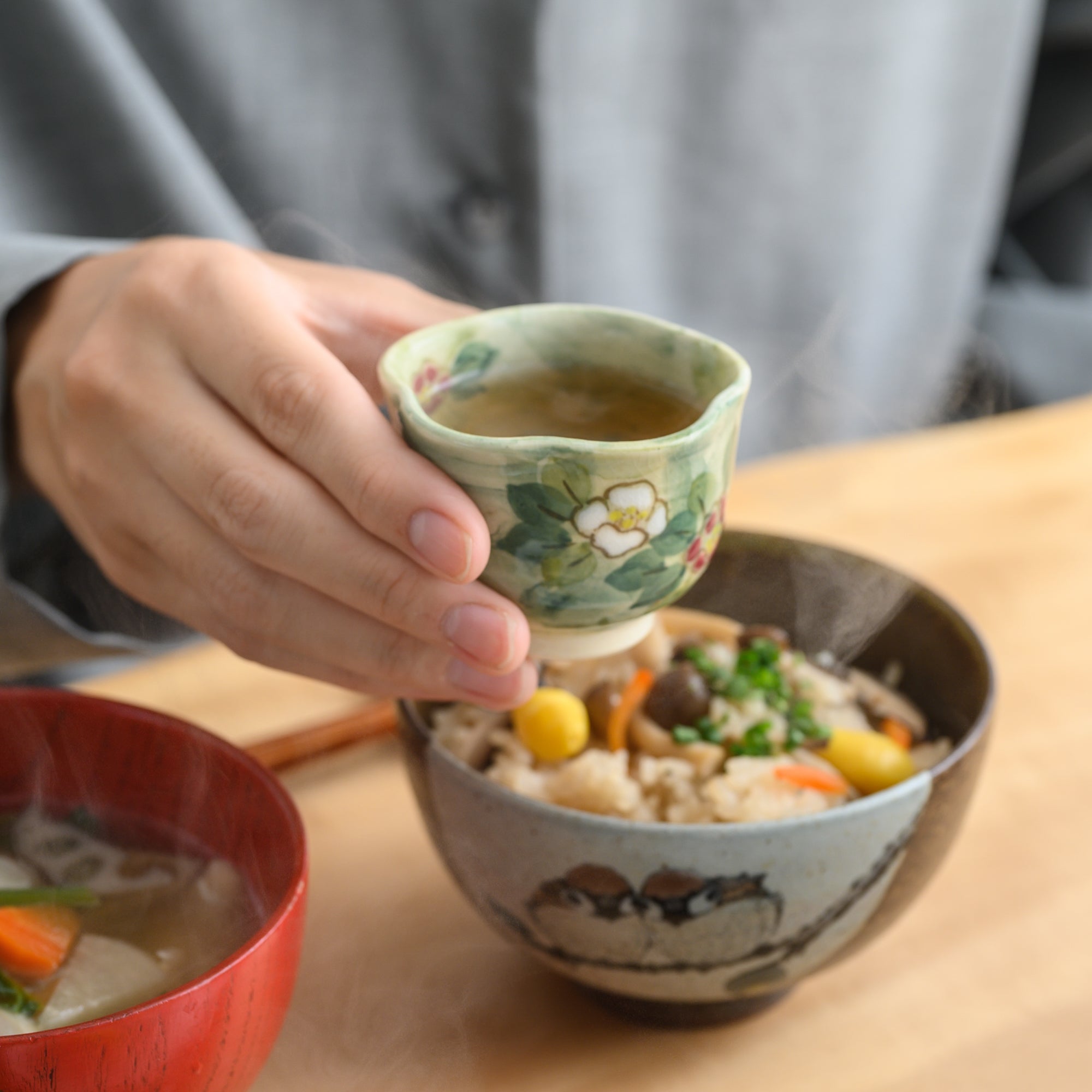
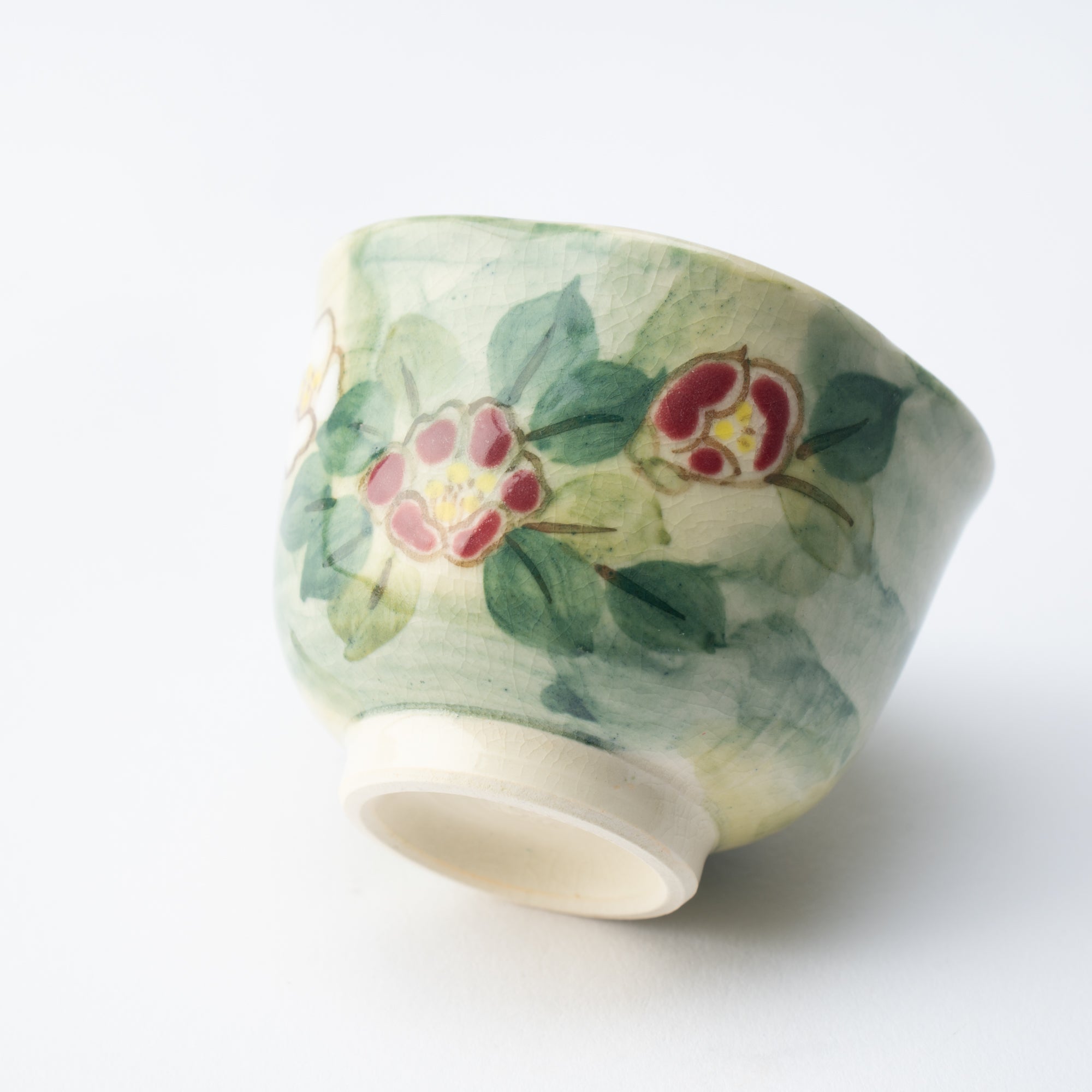
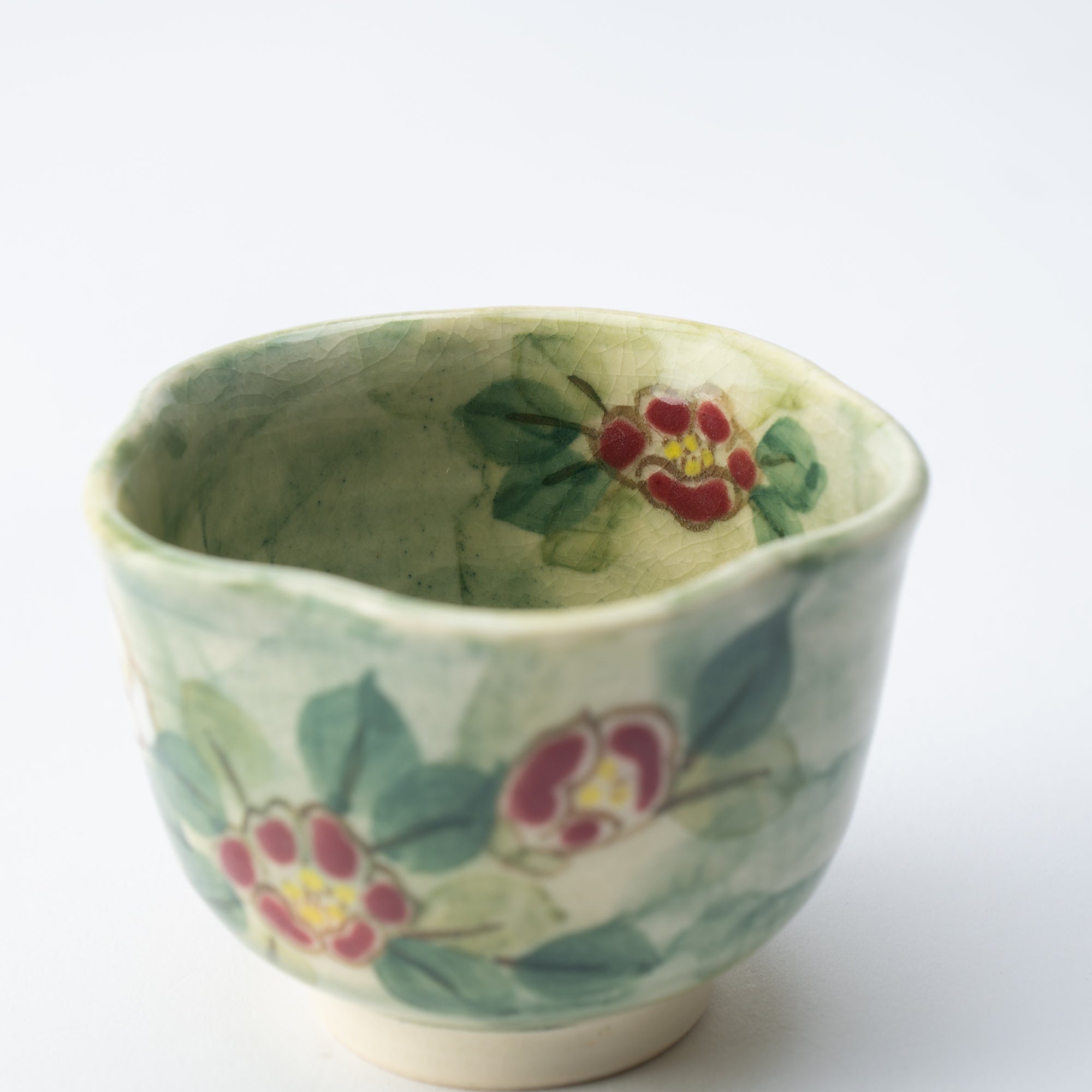
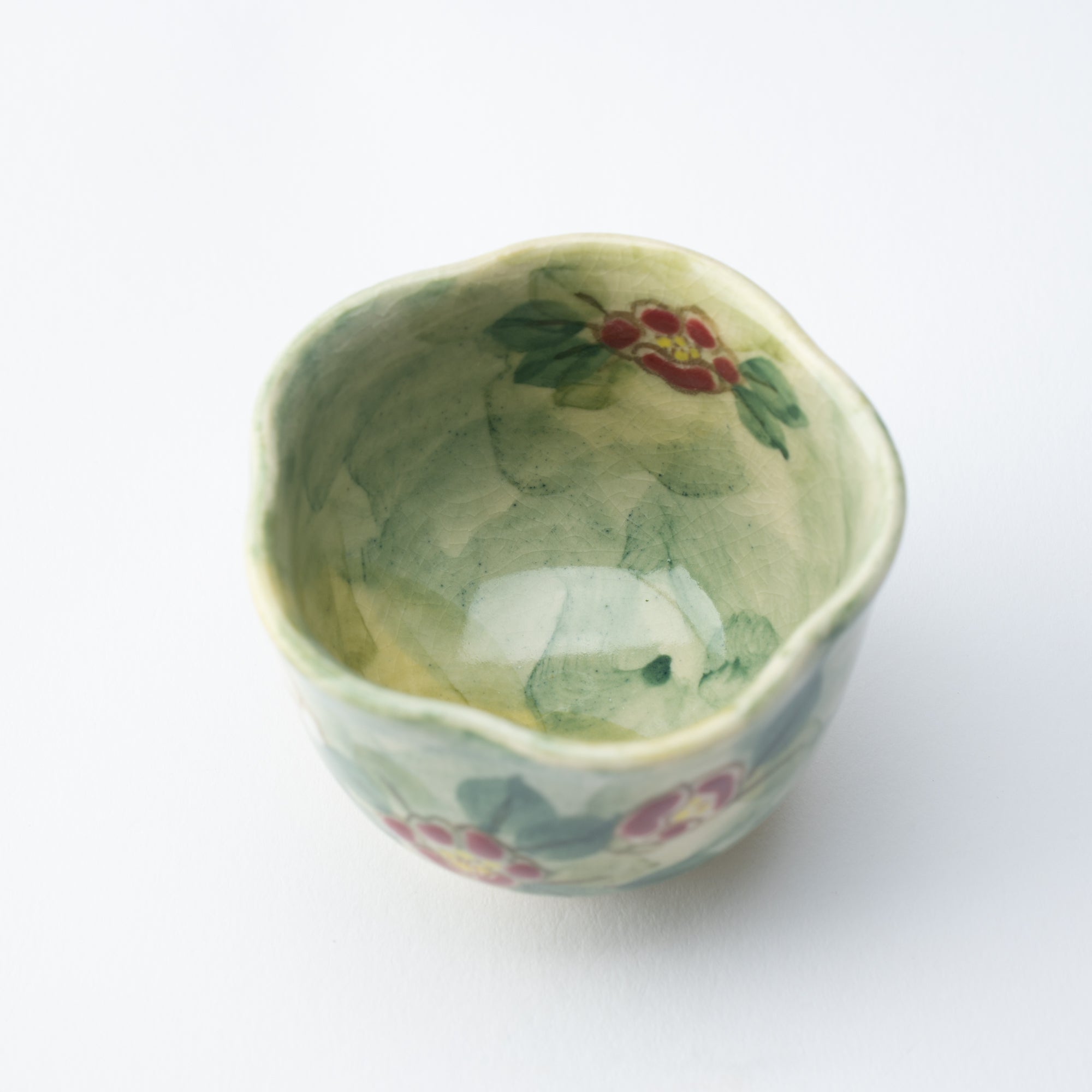
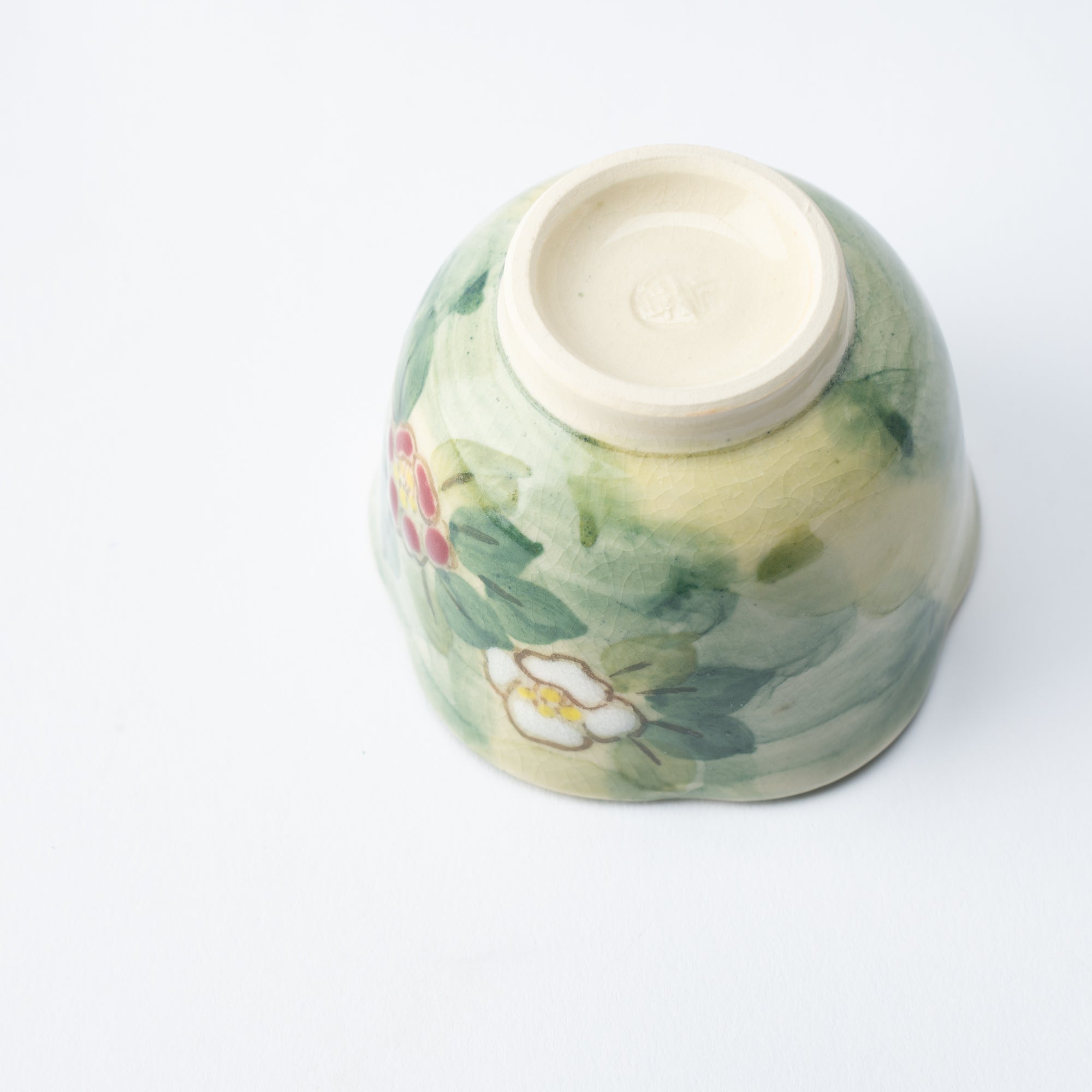
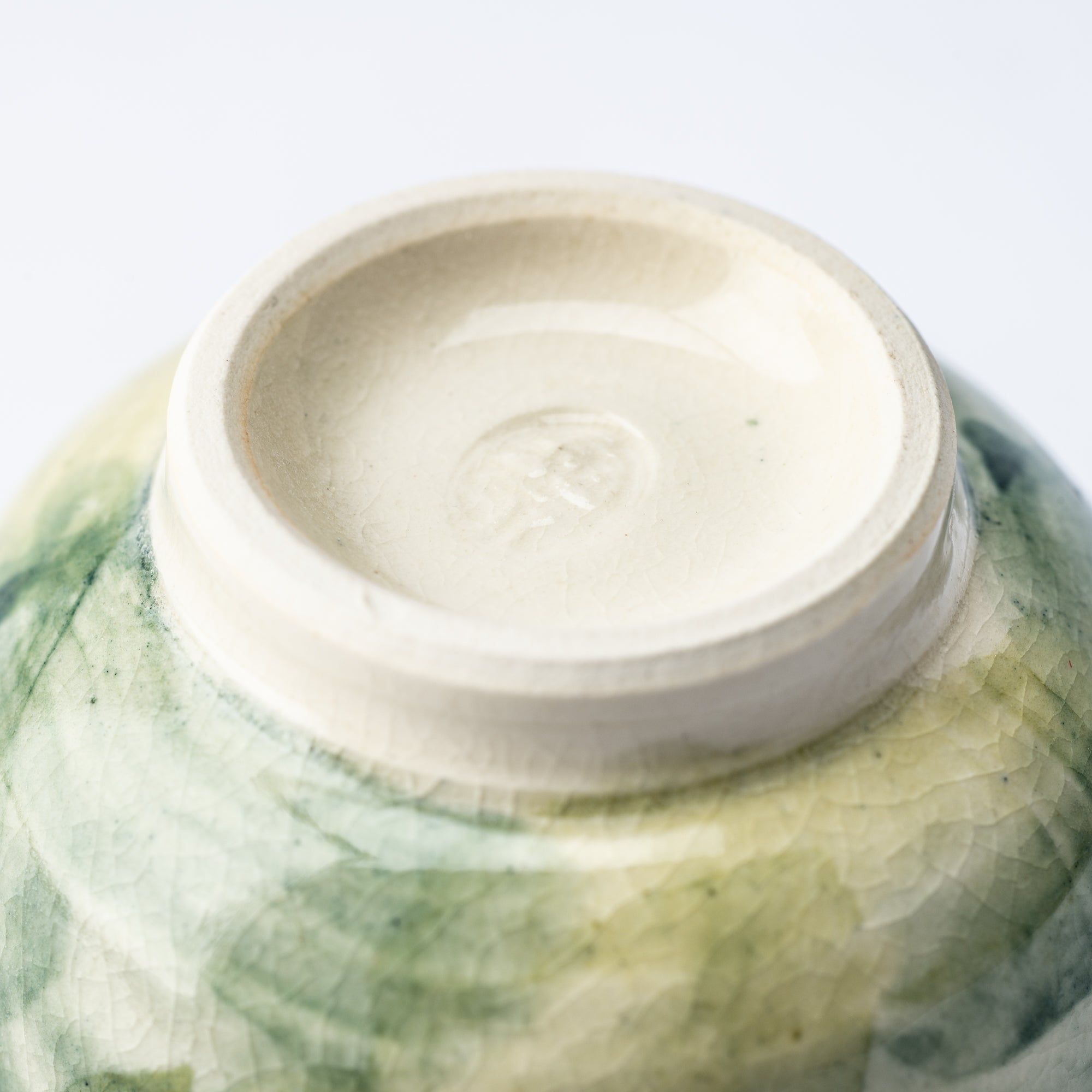
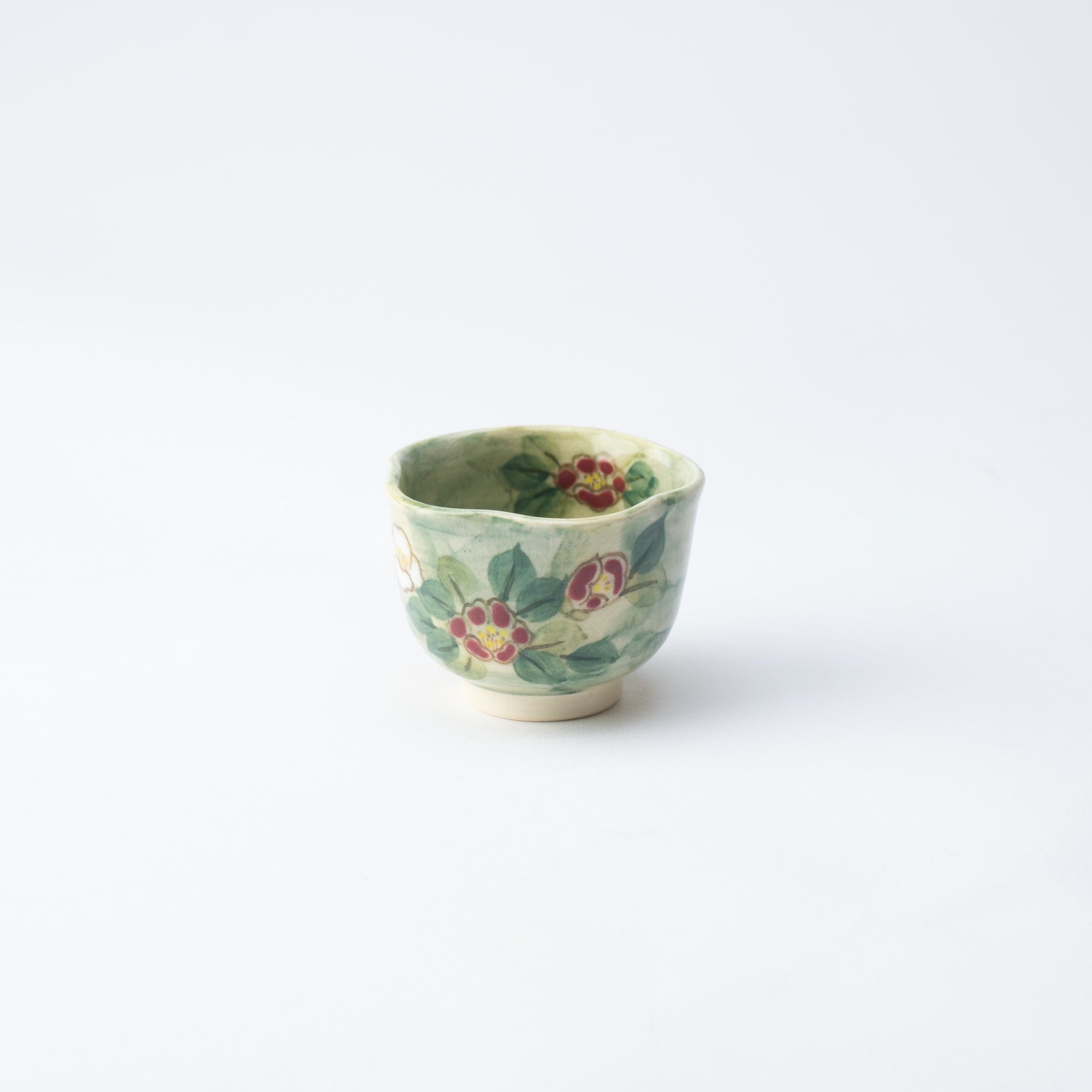
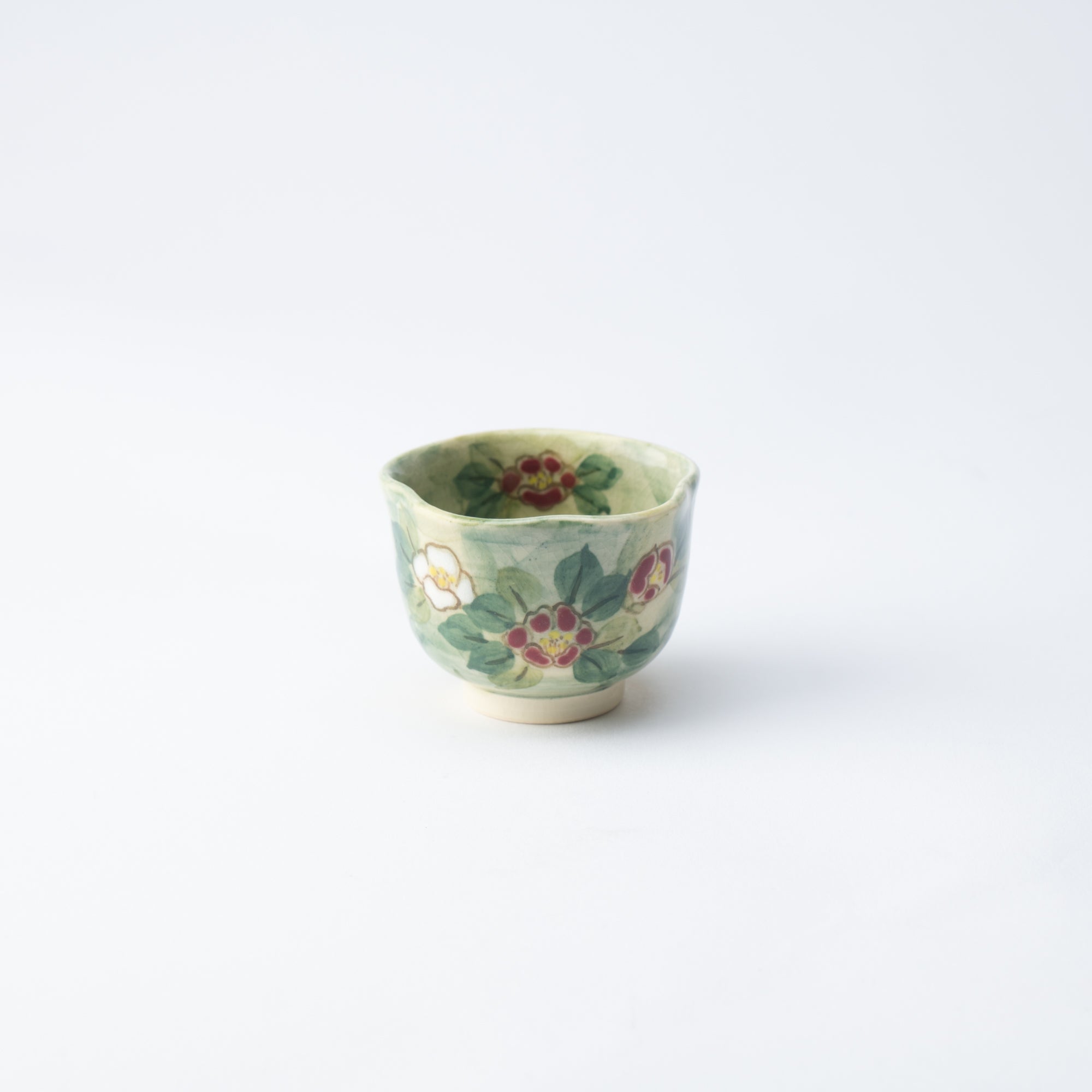
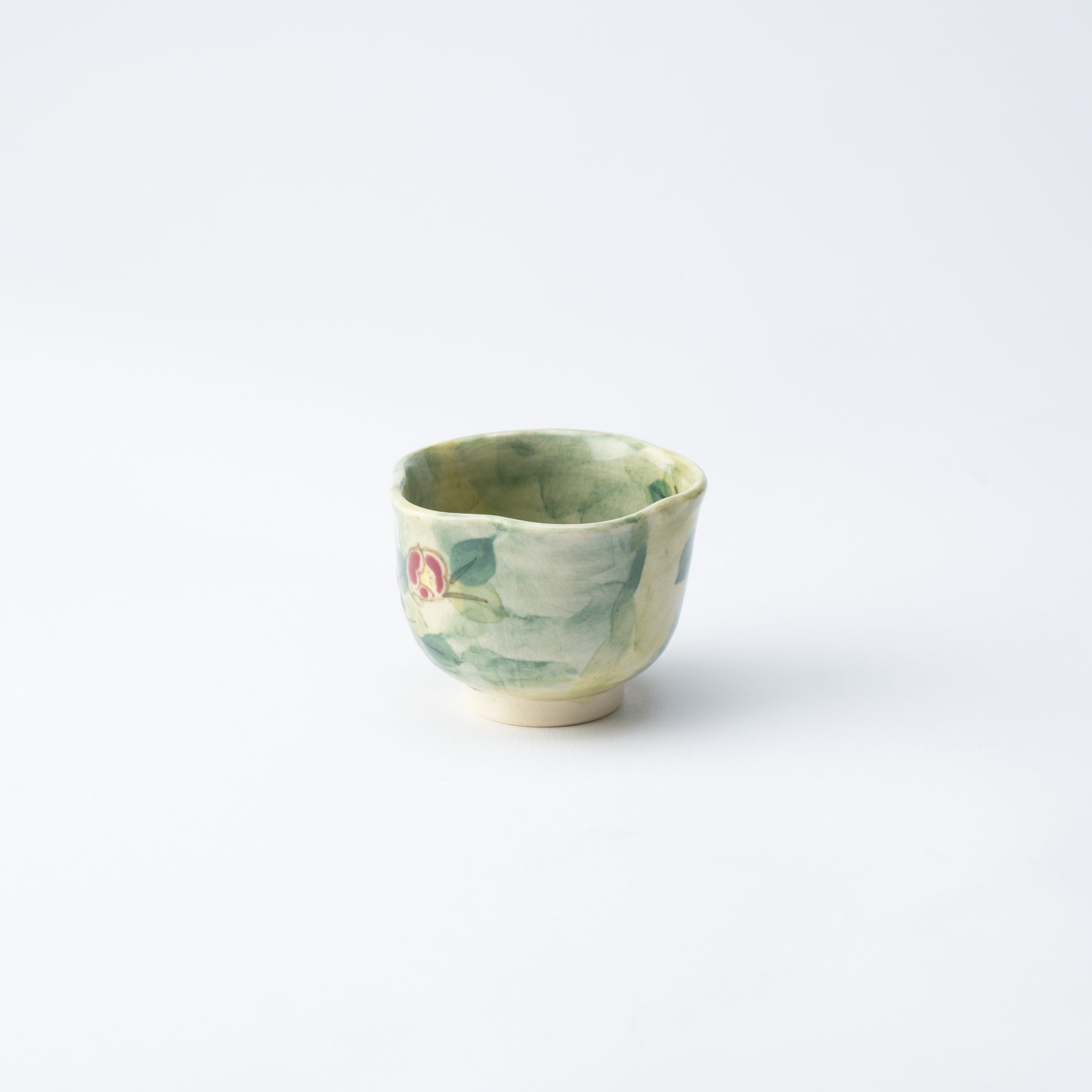
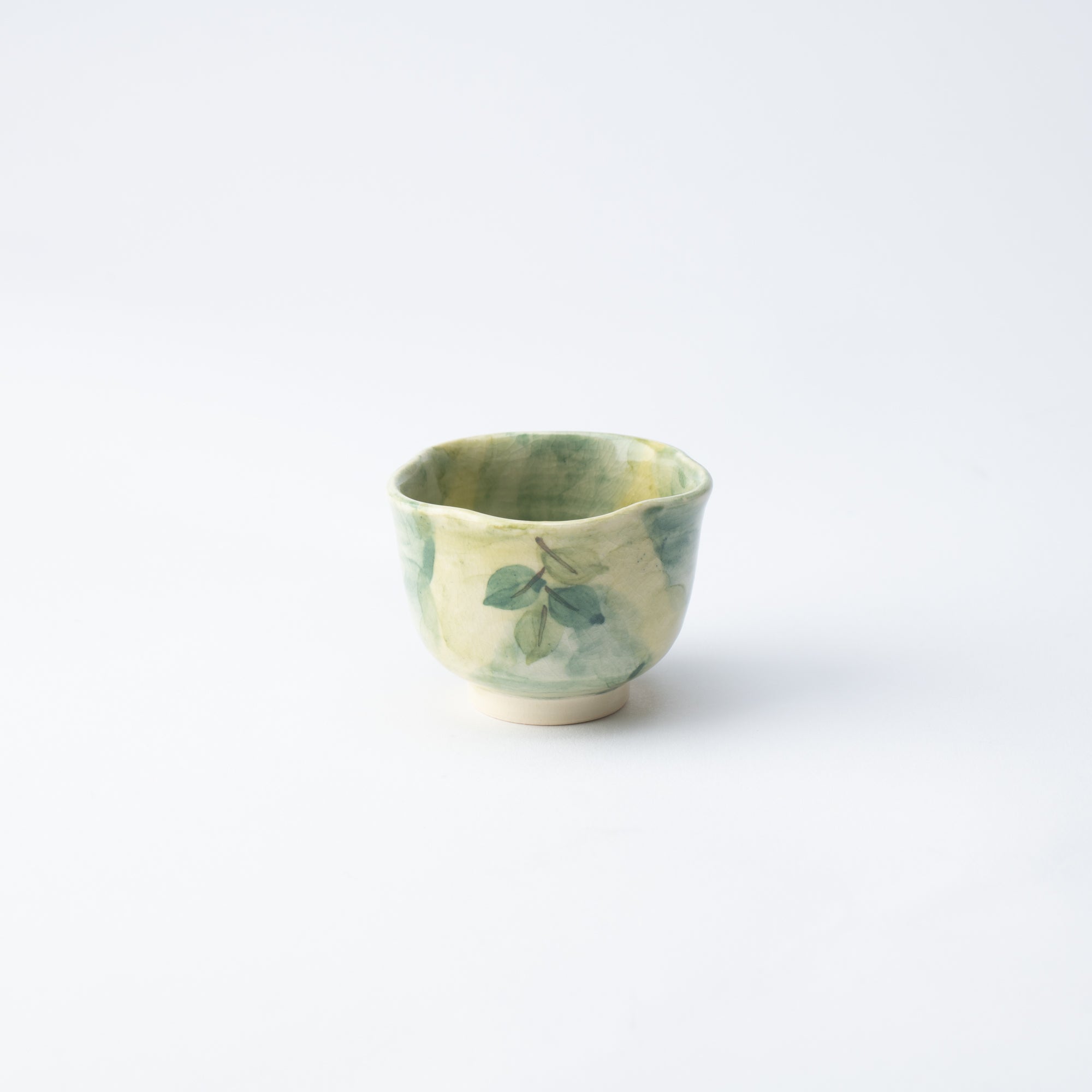
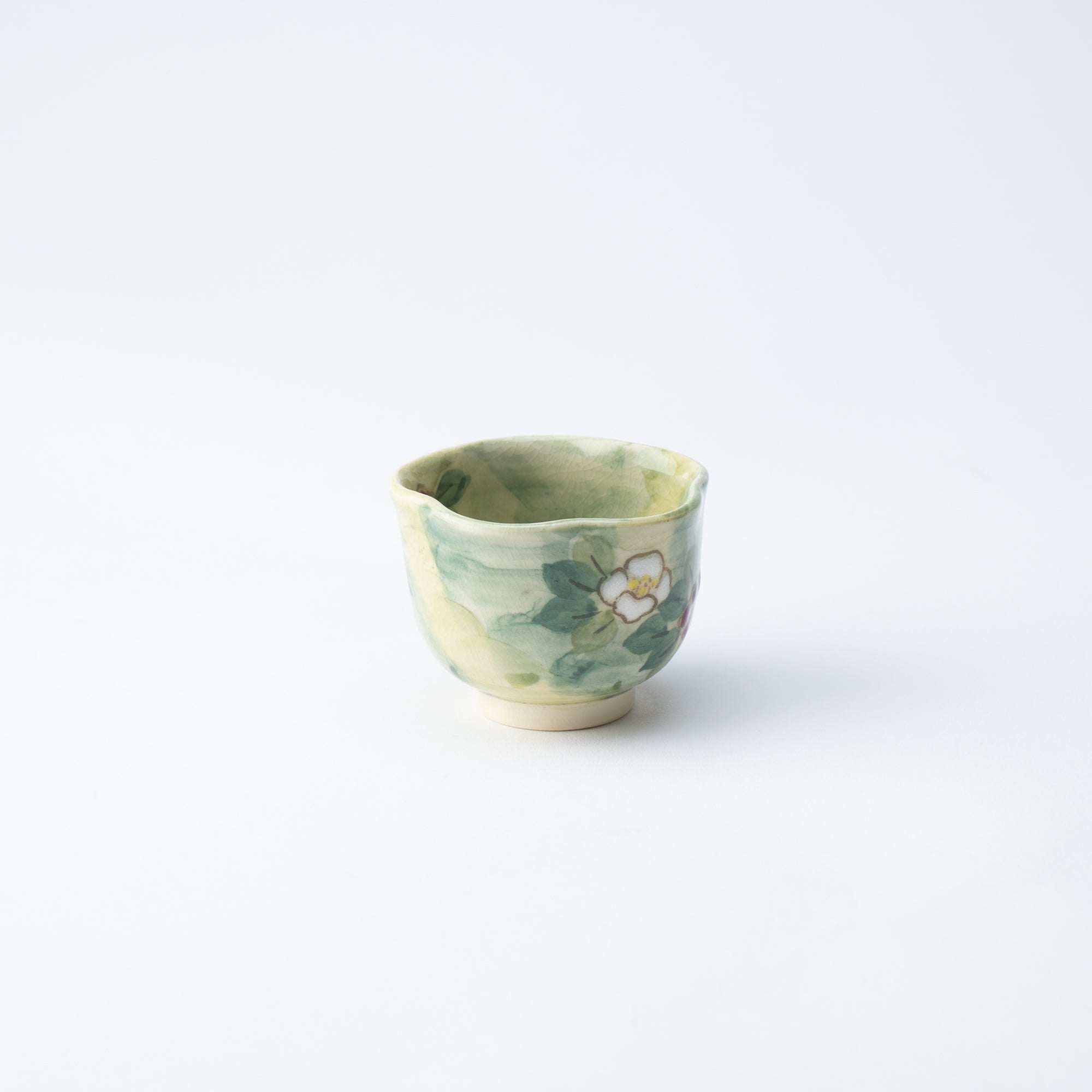
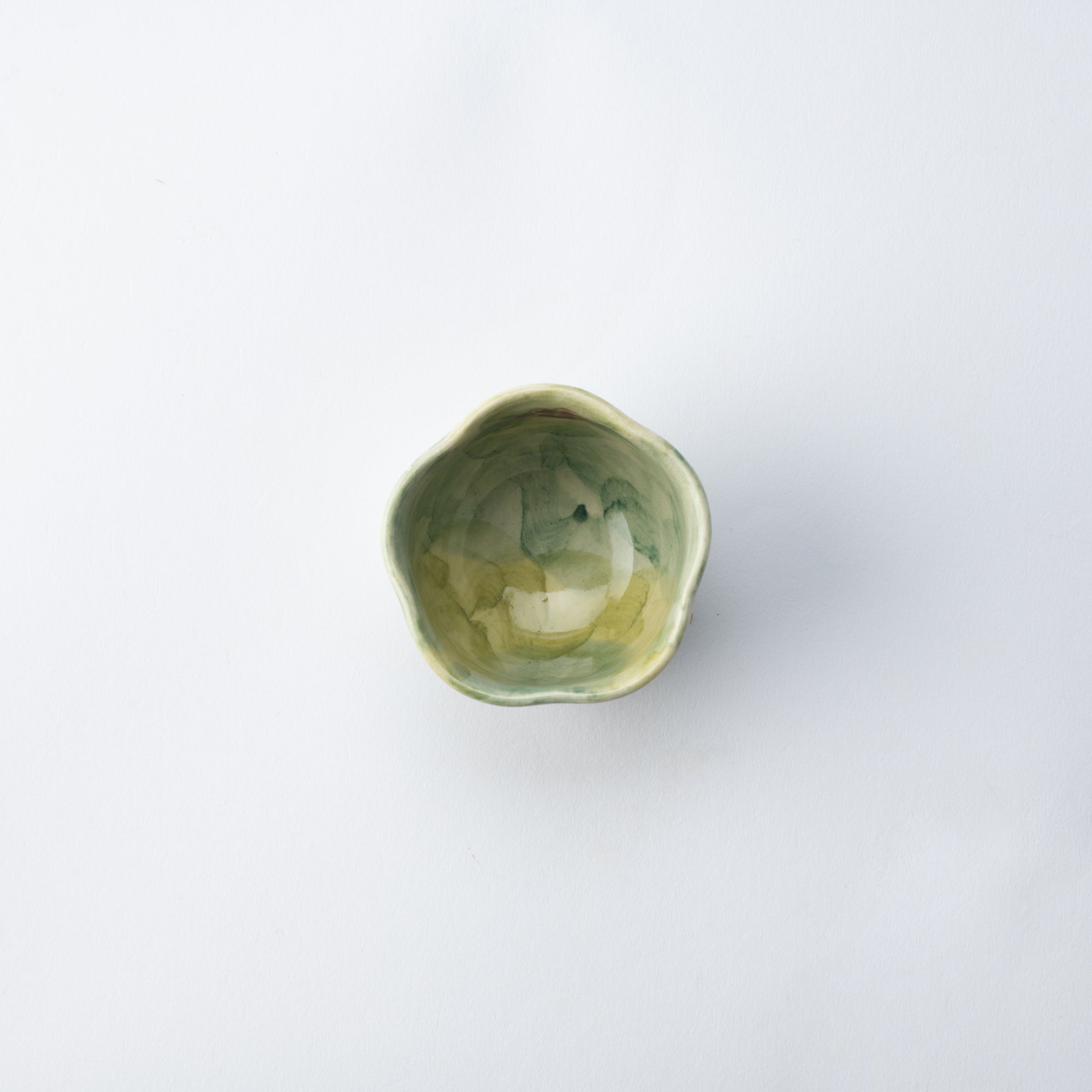
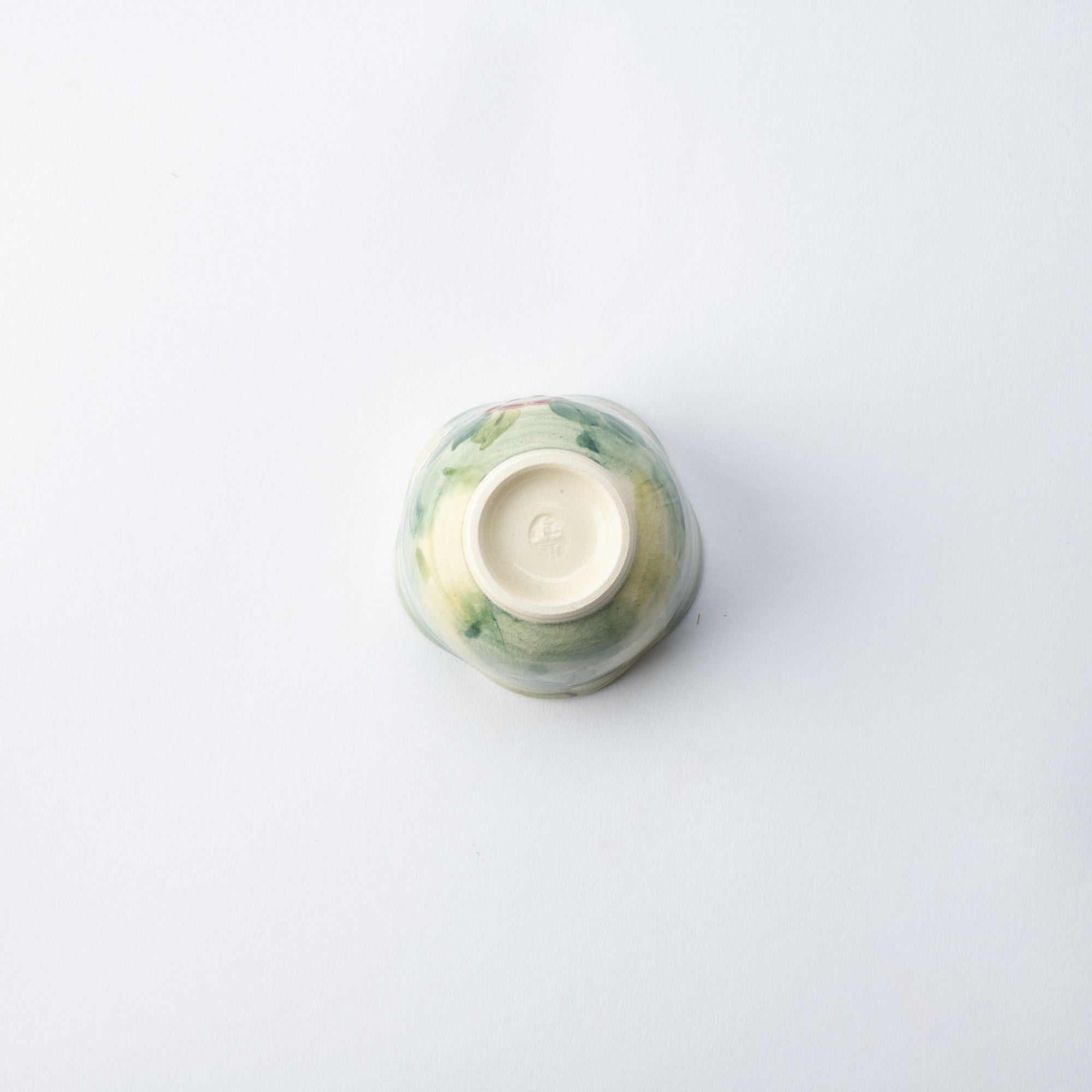
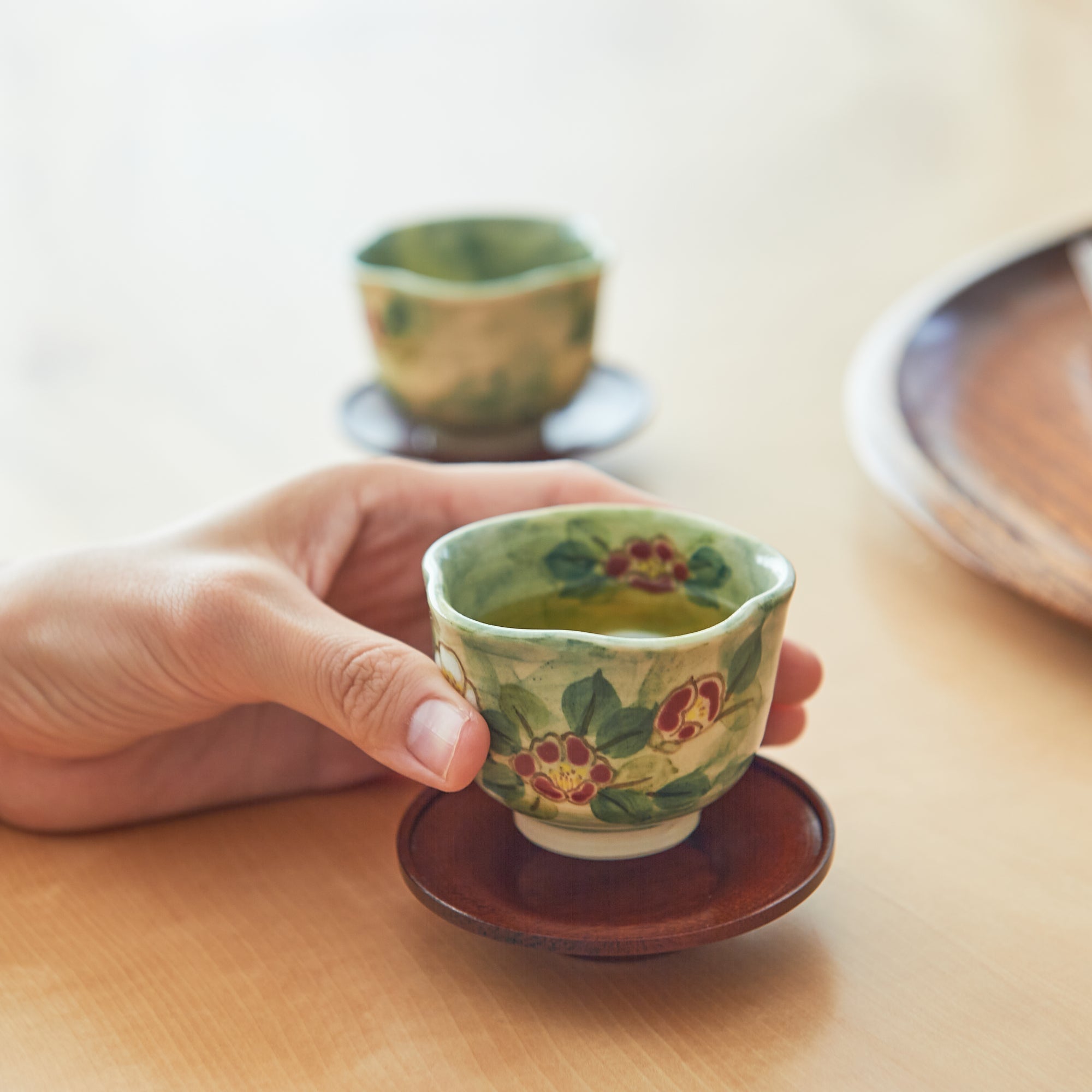
Japanische Teetasse mit Kamelie
Estimated Shipping Widget will be displayed here!
Mit dem unverwechselbaren Nami-Yu Glasur, die aus der Asche des Kyoto-Waldes gewonnen wird, verkörpert diese Teetasse eine natürliche, cremeweiße Tonfarbe, die durch das anmutig gemalte Kamelienmuster, ein Symbol für Taniguchis Leidenschaft und Hingabe für das Handwerk, noch verstärkt wird.
Jeder Pinselstrich auf dieser Teetasse zeugt von der Expertise einzelner Maler im japanischen Stil, die alle über die bloße Dekoration hinausgehen und dem Stück Originalität und Tiefe verleihen wollen. Die Blütenblätter weisen eine einzigartige geprägte und glänzende Oberfläche auf und bilden einen eindrucksvollen Kontrapunkt zu den subtilen Aquarelltönen der Blätter – ein Schnörkel, der die profunde Beherrschung der japanischen Kunsttradition durch den Maler unterstreicht.
Diese direkte Malerei auf geschrühtem Ton erfordert eine Meisterschaft, die nur wenige besitzen. Da die Farbe schnell einzieht, entsteht ein klares, transparentes Finish, das die Feinheiten der Unterglasurmalerei unterstreicht. Die gedämpften Blau- und Brauntöne erzeugen eine gedämpfte Atmosphäre, im Gegensatz zu den kräftigeren Pigmenten der Aufglasurmalerei.
EINZELHEITEN
| Quantity | 1 |
| Size | D 6.5 cm (2.5 in) x H 5 cm (2 in) |
| Capacity | 50 ml (1.7 fl oz) |
| Material | Stoneware |
| Package Type | Paper box |
| Microwave | No |
| Dishwasher | No |
Hersteller / Marke
Tosen Kiln wurde 1868 als Großhändler für Kiyomizu-Ware gegründet. 1944 eröffnete das Unternehmen ein Produktionsstudio in Mukomachi, einem Vorort von Kyoto, und begann damit die Produktion von Kiyomizu-Ware in großem Maßstab. Heute ist der Ofen in Gojo, Kyoto, in Betrieb und führt sein handwerkliches Erbe fort.
Tosen Kiln hat sich der Verfeinerung seiner Techniken und seines künstlerischen Feingefühls verschrieben und greift die traditionelle Handwerkskunst Kyotos auf, während es sie an die Moderne anpasst. Inspiriert vom Töpfermeister Nonomura Ninsei aus der Edo-Zeit, bewahrt das Unternehmen dessen präzise Drehtechniken und leuchtenden Malstil und verbindet diese mit klaren Linien und warmen Tönen, um Stücke zu schaffen, die mit der zeitgenössischen Ästhetik harmonieren.
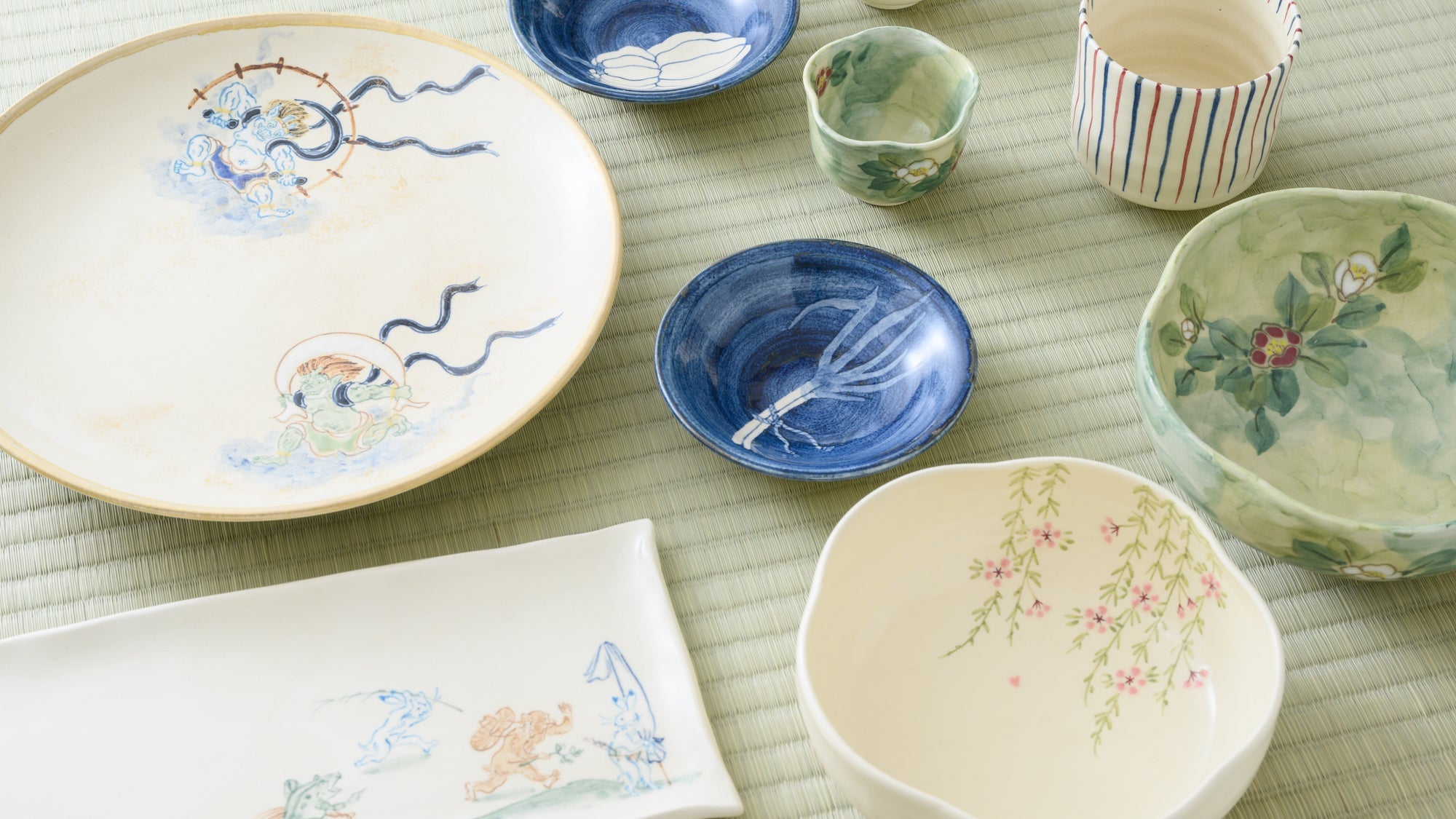
Kunsthandwerk
Kyo- und Kiyomizu-Ware, zusammen als Kyo-yaki und Kiyomizu-yaki bekannt, sind berühmte Keramikstile aus Kyoto. Bekannt für ihr lebendiges Design, ihre fein geformten Formen und die Liebe zum handwerklichen Detail, spiegeln diese Waren Kyotos unverwechselbaren Sinn für Schönheit und künstlerische Raffinesse wider.
Kyo- und Kiyomizu-Ware zeichnen sich durch eine lange gepflegte Vielfalt aus und greifen auf Techniken und Stile der Töpfertraditionen Japans zurück. So entwickelte sich eine ausdrucksstarke und typisch Kyoto-Kunstform. 1977 als traditionelles japanisches Kunsthandwerk anerkannt, werden sie bis heute wegen ihrer kulturellen Tiefe und Alltagstauglichkeit geschätzt.

Optionen auswählen
















Japanische Teetassen
Wir haben sorgfältig eine Sammlung japanischer Teetassen aus ganz Japan zusammengestellt, um Ihre ruhige Teestunde zu verschönern. Diese Teetassen sind nicht nur optisch beeindruckend, sondern auch praktisch und somit perfekt für den täglichen Gebrauch.
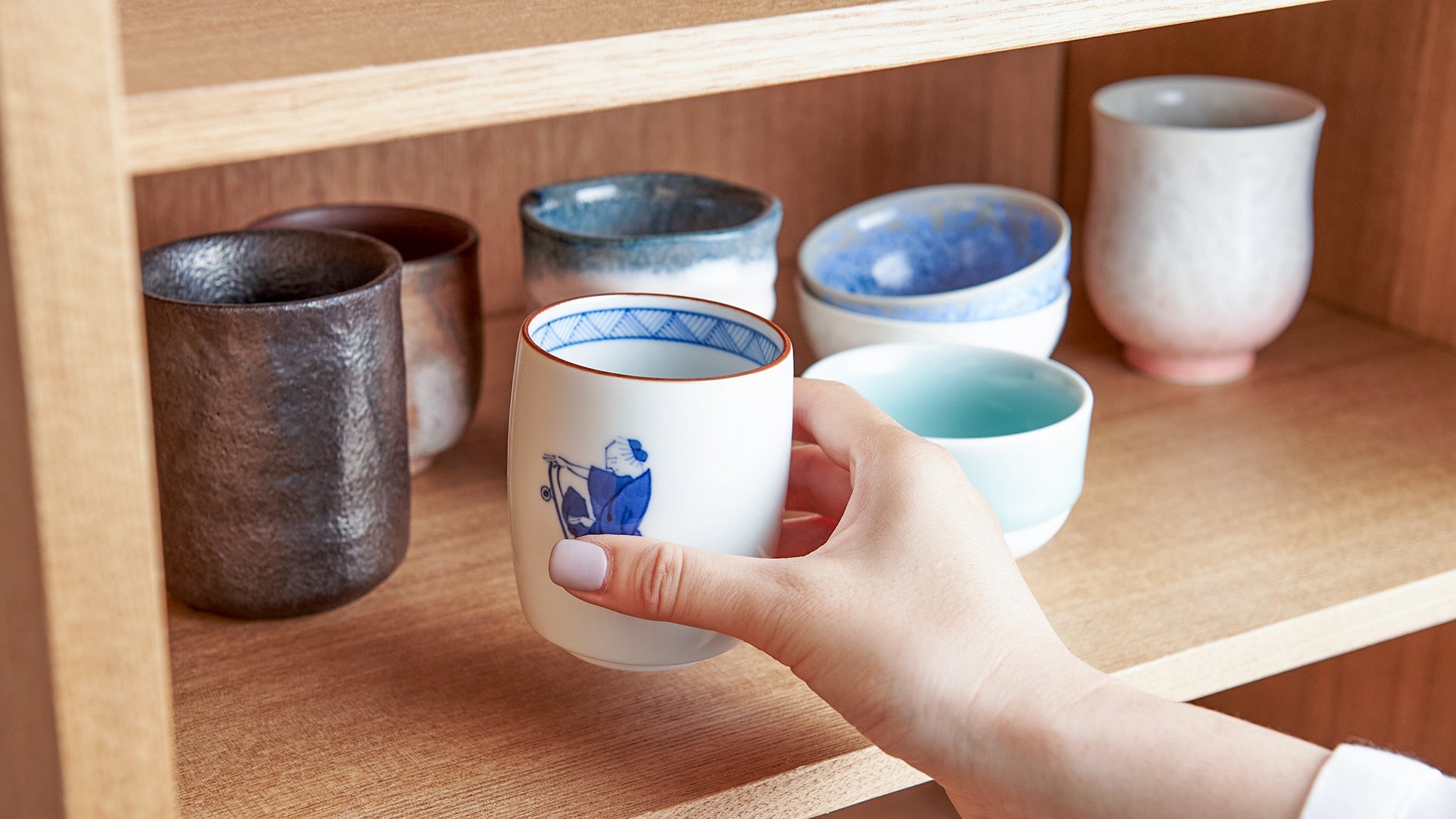
Steingut
Aus unserer Kollektion an Geschirr und Essgeschirr haben wir Steinzeugprodukte zusammengestellt, die die Wärme des Materials voll zur Geltung bringen. Wir hoffen, dass Sie diese Stücke, die bei Menschen jeden Alters und aus allen Regionen beliebt sind, in Ihrem Zuhause willkommen heißen.
